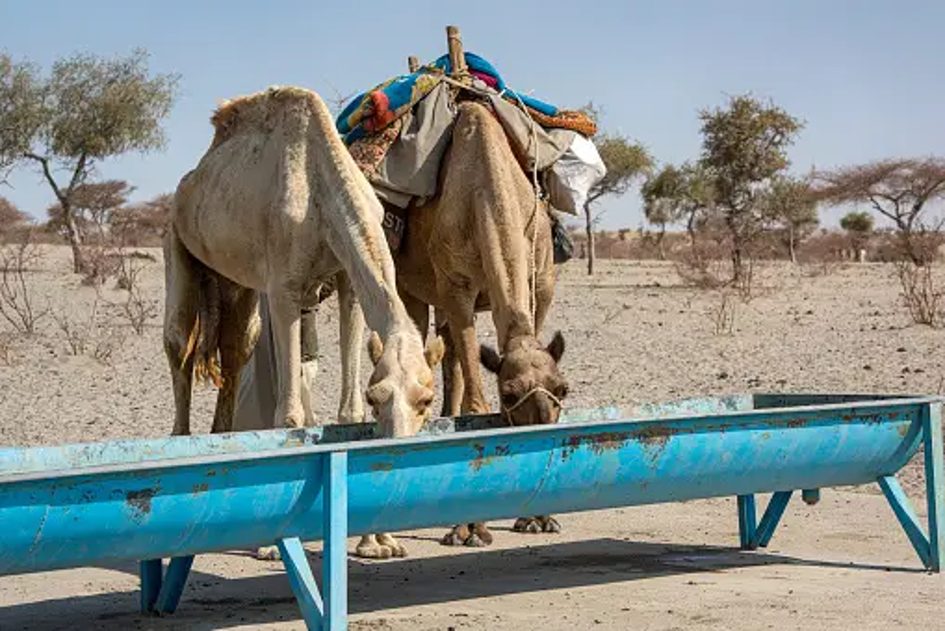The International Fund for Agricultural Development (IFAD), a specialized financial institution supporting the development of rural populations, has just released the results of a survey on the sources of financing used by agricultural and rural organizations: “Access to finance for farmers’ organizations.” Over 200 institutions in twelve African, Asian, and Pacific countries responded to this survey. The study is based on preliminary results collected from a smaller panel (a few African countries) to understand financing needs and identify the most promising and sustainable initiatives.
The survey shows that funding requests from formal institutions are more likely to be successful, with higher amounts granted. Through this survey, IFAD aims to identify the best financing mechanisms within this farming ecosystem.
This link between the type of financier and the actual acquisition of financing is particularly visible when comparing continents. In Asia, 90% of farmers’ organizations received their funding from official institutions. In West Africa, only 12% of similar organizations received financing from local and informal lenders.
Overall, the Southeast Asia (SEA) region receives more financing according to feedback from agricultural organizations in this part of the world, claiming to obtain three or four times more than those in West Africa. This observation is also a result of more favorable public policies for agricultural financing, combined with a more well-established financial ecosystem.
Despite this, all farmers’ organizations remain underfunded compared to production and food security objectives. The majority of requests focus on working capital for which SEA region financiers offer more flexible repayment conditions. African farmers’ organizations express additional needs, such as loans for assets and trade financing.
In Africa, the difficulty in accessing financing is due to high interest rates and collateral requirements. The ability of the applicant to fill out application forms or pay banking fees also plays a role.
The same barriers exist for members seeking loans from their parent organizations. These farmers’ organizations themselves require guarantees to minimize their risks. They primarily intervene for emergency loans or to ensure members against risks.
Green finance is still scarce in the agricultural ecosystem, with climate change mitigation or biodiversity preservation efforts taking the form of advice, support, or training (reforestation, transitioning practices or input usage).
Digital credit offerings improve access to financing for a larger number of farmers, although they often have to pay higher interest rates on borrowed money.
Objective: Facilitating Rural Financing
Young people and women make up the majority of the rural agricultural population, but they struggle to access financing due to cultural issues (guarantees, trust, power, etc.). IFAD estimates that less than one in ten farmers in rural areas, particularly those in the poorest segments, have access to financing.
Whether it’s agri-SMEs or farmers’ organizations, the agricultural sector does not naturally have the trust of financiers, despite states emphasizing food production. The lack of financing hampers productivity and the means to transform the agricultural sector to meet evolving needs, climate challenges, and operational uncertainties (input shortages, conservation, processing, and transportation).
Farmers’ organizations serve as a platform for transitions, focused on a product or territory, bringing together smallholders, livestock keepers, fishermen, and indigenous people, with or without land.
The survey was conducted in two phases, with the first results analyzed by representatives of farmers’ organizations during workshops organized in Africa and Asia to evaluate the quality and relevance of the data.

Most of the surveyed structures are cooperatives. Africa and Southeast Asia have many small organizations with fewer than 500 members. However, SEA also has large groupings:
- More than 1,000 members: 56%
- More than 10,000 members: 32%
In phase 2, India accounted for two-thirds of the surveyed members (4.8 million out of 6.7 million) and displayed a strong female presence, notably through the Self-Employed Women’s Association (SEWA), an NGO founded 50 years ago in the state of Gujarat.
In Africa, young people are more broadly represented.
Analysis of Survey Results
The study shows that organizations have access to financing but in a disparate manner between regions and borrower profiles. Privileged regions (Asia) have a high median financing amount ($42,500), while in West Africa, it is $12,500, and in East and South Africa, it is $9,840.

The authors of the report highlight several key factors in accessing financing:
Annual Income: Unjustly, the poorest organizations, due to their size or regional economic conditions, have less access to financing.
Number of Members: While financing is easier for larger organizations, it still depends on local financing conditions. In West Africa, even the largest farmers’ organizations find financing less accessible than in Asia.
Proportion of Women: Despite the significant role of women in organizing agricultural operations, their presence within African farmers’ organizations tends to reduce access to financing for cooperative structures. In Asia, the opposite is observed, with organizations with a strong female presence receiving higher funding amounts.
Proportion of Youth: Youth is also a barrier to financing, despite this group constituting the majority of the population in Africa.
Financier’s Profile: Formal private and public institutions provide the majority of financing. For example, financing in the Asia region comes from the following sources:
-
- Commercial banks: 34%
- Microfinance banks: 17%
- Government funds: 20%
- Development institution funds: 13%
The remaining financing comes from local rural or agricultural banks, official organizations with agricultural development programs, financial cooperatives, or community savings groups.
In West Africa, due to difficulties in accessing financing, applicants use multiple sources. In addition to the formal institutions listed above, informal providers, local lenders, NGOs, and more are added. In East and South Africa, government financing represents the majority (78%), but accessing this financing requires less accessible formal procedures for smaller organizations.
The Impact of Digital in the Financing Ecosystem
The survey demonstrates that some barriers to accessing financing are removed when it is requested and obtained through digital services. The digitization of procedures also reduces administrative costs for both parties.
However, for financing requests exceeding $70,000, more complex processes or arrangements are handled conventionally, outside of digital services.
Farmers’ organizations still note the difficulty of using and becoming familiar with these digital services in the absence of physical assistance. More mature organizations confront digital services and can manage potential interface issues (bugs, network coverage, terminals, etc.).
It appears that digital services provide additional assurance for lenders in favor of the borrower, perceived as a more professional organization.
The mechanisms and barriers identified in the study are the same within the financing relationship between the farmers’ organization and its members. However, the organization goes beyond the financial services provided by formal financial institutions. It potentially acts as a buffer in times of crisis, whether environmental or economic.
Farmers’ Organizations as a Lever for Transition
Financing farmers’ organizations enables the agricultural sector to produce enough to feed the population, in line with Sustainable Development Goals (SDGs). It also supports these structures in providing guidance and information to farmers, particularly in training and information.
Such initiatives contribute to transforming farmers into more resilient actors capable of:
- Changing their practices
- Maintaining biodiversity
- Adding value to their products
- Professionalizing their activities
- Adopting digital tools
Therefore, financiers have every interest in considering this financing not just as loans on collateral but as investments aimed at supporting economic development policies and viewing farmers as the entrepreneurs they are or need to become.




